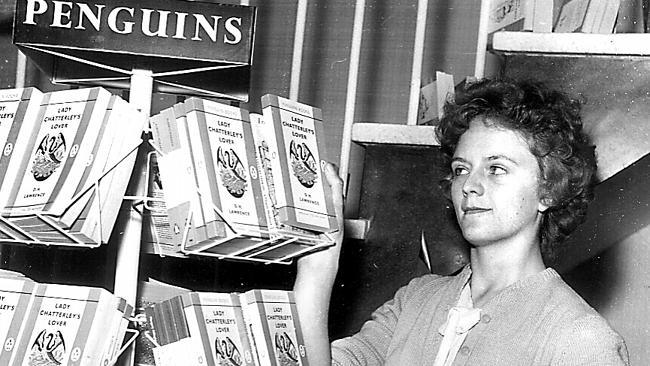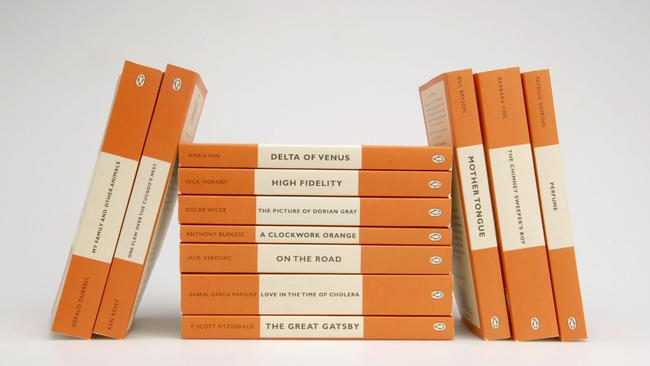Paperback pioneer: How Penguin publisher Allen Lane turned the book world on its head
JUST like his bestsellers, publisher Allen Lane’s story of how he dreamed up the publishing phenomenon of Penguin paperbacks is a grand tale.

Today in History
Don't miss out on the headlines from Today in History. Followed categories will be added to My News.
JUST like his bestsellers, publisher Allen Lane’s story of how he dreamed up the publishing phenomenon of Penguin paperbacks is a grand tale.
As the up-and-coming director of his uncle’s Bodley Head publishing house, Lane found himself without a book while waiting for a train after a weekend at author Agatha Christie’s country home. Perusing stalls at Exeter station for something to read, Lane found only popular magazines and reprints of Victorian novels.
Appalled by the selection, he decided to make quality contemporary fiction available at an attractive price, for sale not only in bookshops but at railway stations, chain stores and tobacconists.
Deciding his book line, to retail for sixpence an edition, should have a “dignified but flippant” symbol, in office discussions his secretary suggested a Penguin logo. Another employee was sent to London Zoo to make sketches.
Even as Lane launched his first 10 Penguin paperbacks on July 30, 1935, Bodley Head directors dismissed his idea of retailing paperbacks for sixpence as impractical.
After 80 years, Penguin can list Christie, Ernest Hemingway, D.H. Lawrence, Mark Twain and Leo Tolstoy among its of authors.
READING ON THE RUN
Cheap paperback fiction had by then been published and sold in Britain, Europe and America for almost a century, with the first paperbacks dating to the 16th century. Paperbacks were most common in France, where the first edition of James Joyce’s Ulysses was published as a paperback in 1922.
Early mass-produced paperback publishers Routledge & Sons, founded in 1836, and Ward & Lock (1854) had distributed cheap books across Britain and Ireland, often through W.H. Smith & Sons newsagents at railway stations. By 1898 the Routledge’s Railway Library series offered 1277 titles.
Large-scale paperback publishers in the US included the American Library of Useful Knowledge from the 1840s. After the Civil War several American publishers took advantage of limited international copyright agreements to produce cheap editions of popular European novels.

THE COLOUR OF SUCCESS
In Germany, Bernhard Tauchnitz began publishing in Leipzig in the 1830s and survived World War I, hyperinflation and the Depression. Tauchnitz also profited from limited copyright restrictions to publish German authors and foreign bestsellers such as Aldous Huxley, H.G. Wells, James Joyce and Ernest Hemingway.
But Nazi Party bans from 1930 resulted in Tauchnitz authors defecting to Paris-based Albatross publishers, founded in 1932 by former Tauchnitz manager Max Christian Wegner and Kurt Enoch.
The name was chosen because Albatross is the same word across many European languages. Book covers used new sans-serif fonts and were colour-coded by genre, with orange for fiction.
Although so successful that Albatross purchased Tauchnitz, the brand fizzled during World War II when Lane hired Enoch to manage Penguin’s US branch.
Lane had adopted many Albatross design features for Penguin, including orange for fiction, blue for biography and green for crime.
SAVED BY WOOLWORTHS
Despite having titles by Hemingway, Christie, Dorothy L. Sayers and Eric Linklater, book retailers were slow to stock Penguin, leading Lane to the Woolworths offices on New Bond St, Mayfair. The retailer was renowned for an open-door policy, promising any caller a meeting with a relevant buyer if they were prepared to wait. Within an hour, Lane was greeted by E. Clifford Prescott, who handled books.
As Prescott shuffled in his seat and looked out the window, Lane feared his sales pitch was falling on deaf ears. But Prescott’s wife interrupted, apologised and told her husband she was ready for lunch.
She noticed Christie’s Poirot title The Mysterious Affair At Styles among books on her husband’s table and inquired if the firm was considering selling the softcover books, as she would buy several a week if they cost sixpence or less.
Prescott ordered 36,000 assorted titles, with extras for seaside resorts. By the end of summer, Woolworths had sold 63,000 Penguin books. Penguin hit a million sales in March, 1936. As war loomed, its special title What Hitler Wants, and wartime guide Aircraft Recognition, were bestsellers.
Penguin was charged under Britain’s Obscene Publications Act of 1959 after publishing D.H. Lawrence’s banned 1928 title Lady Chatterley’s Lover. The company was acquitted in 1960.
People queued to buy the book, which sold two million copies in six weeks — undoubtedly beneficial when Penguin listed as a public company in 1961. Its share offer was 150 times oversubscribed, setting a London Stock Exchange record.
A NOVEL SUCESS
Born Allen Lane Williams in 1902, Lane had come into the world of publishing when he joined his childless “uncle” John Lane, actually his mother’s cousin, as an apprentice in 1919, taking over as managing editor when John died in 1925.
He attended a conference in Oxford in 1934 where publishers discussed how their titles could reach a larger audience. Lane and his brothers John and Richard launched Penguin as a separate company in 1936, operating from the crypt of the Holy Trinity Church on Marylebone Rd and using a fairground slide to receive deliveries from the street.
Lane, knighted in 1952, died on July 7, 1970.
Originally published as Paperback pioneer: How Penguin publisher Allen Lane turned the book world on its head


